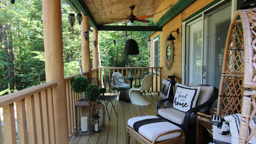
Photo Credit: Carlos Santos
Growing up I learned to respect the Old Man. Old Man Winter can wreak havoc on boats and their metals, seals, vinyl and more.
Winterization is the process of preparing your boat for hibernation to ensure it wakes up ready for action the following spring. This process also helps the psyche of the owner, who must accept that the boating season is truly over. The following is a quick guide to getting your boat and yourself through winter with minimal damage.
Remember these.
There are two critical words to remember when preparing your boat for winter: “water” and “lubrication.” In the freezing winter, water is bad. When water is trapped in an engine or exhaust system and freezes, it puts a tremendous amount of stress on gaskets, seals and the metals themselves. The expansion can break apart sealing surfaces and, in extreme cases, crack metals. Conversely, lubrication – the enemy of water – is good. More on lube later.
Water be gone.
To avoid water expansion issues, use an air compressor to blow the water out of every crevice. Be sure not to blow too close to any component as too much air pressure can cause damage as well.
For you: Hold the hose roughly two feet away and blow it on yourself (but not on your face). This will fill your need to feel the wind on your chest as if you were driving your boat.
Time for a drink.
If your engine uses coolant, autumn is a good time to drain any existing fluid from the engine block and manifolds and replace with new coolant. Use a nontoxic, propylene glycol-based antifreeze because ethylene glycol-based antifreezes are known to release toxins into the water.
WD-40 and sunscreen.
Now that the internals are taken care of, it is time to care for the external components and cosmetics. Lubricating the working components requires a high-quality water-displacing lubricant such as WD-40. Liberally spray the lubricant on all moving components, hinges, hoses and electrical connections. Dielectric grease should be used on all connectors to ensure minimal corrosion takes place and at the same time it will help electrical flow through the connectors.
Wax on.
Keep your cosmetic components fresh and new looking by applying general vinyl care products from an auto parts store and apply liberally to all exposed materials. To protect the gelcoat, apply at least one thick coat of gelcoat/fiberglass wax. This will make cleaning off the winter grime that much easier.
For you: Before you put the cover on your beloved summer toy, take a picture of it. Blow it up, and put it on your desk until you take it out after hibernation.
Enjoy the leaves changing, a white Christmas – and spring will be here before you know it.
Tim McKercher is contemplating bringing his favorite PWC indoors for the winter, thinking it might make a great lounge chair in his den.










